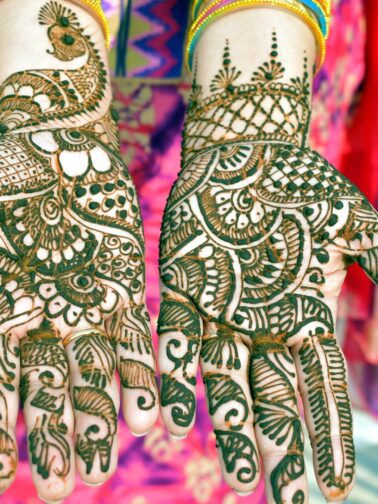The Famous Henna Tattoos
Henna body art has emerged as a significant contemporary choice for those seeking skin adornment without needle penetration or permanent commitment.
This ancient pigment originates from the henna shrub, whose leaves release remarkable natural dye properties after drying and grinding. For millennia, this terracotta-red color has flowed through the fabric of different civilizations: Chinese court ladies used it to stain their fingernails, Egyptian priests applied it to mummies’ hair to impart eternal vitality, and Assyrian warriors tattooed sacred animal totems on their chests to seek divine protection in battle.
The tradition continues vibrantly today—Moroccan brides are adorned with intricate vine patterns on their wedding eve, Indian babies receive protective symbols on their palms, and Gnawa musicians wear spiritual designs for ritual ceremonies. Henna remains a visible bridge connecting the secular and sacred, carrying both humanity’s eternal pursuit of beauty and an ongoing dialogue between continents.
In Marrakech’s Djemaa el-Fna square, henna artists still use traditional cone applicators to create contemporary designs that blend Berber geometry with Arabic calligraphy. Each transient pattern becomes a walking cultural poem, where the gradual fading of the stain mirrors the ephemeral nature of human experience itself—a beautiful reminder that some of life’s most precious treasures are meant to be temporary.
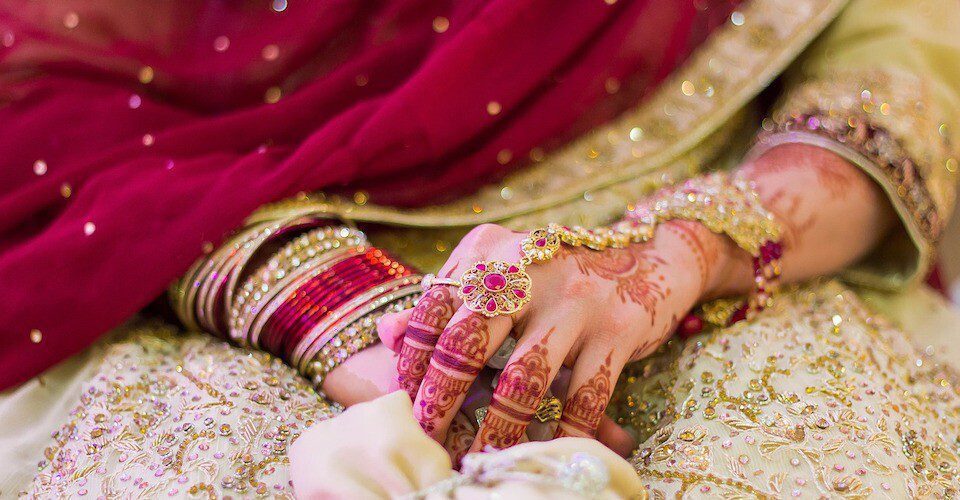
In ancient villages across India and Africa, henna transcends mere decoration to become a living art form carrying collective memory. Women skillfully adorn hands and feet with intricate mandalas and trees of life—these meticulously executed patterns requiring hours to complete serve both as devout homage to deities and as visual codes passed down through generations of women. When brides are covered with pomegranate motifs symbolizing fertility on the eve of their weddings, when infants receive protective eye symbols on their palms during naming ceremonies, henna has become an indispensable cultural imprint in life’s rituals.
Contemporary henna art is undergoing profound transformation:
Tokyo teens adorn their collarbones with cherry blossoms blended with calligraphic kana
New York models showcase Art Deco-inspired geometric symphonies across their backs
Rio carnival dancers translate samba rhythms into flowing chromatic waves
While these innovative designs have moved beyond traditional religious contexts, they continue the essential appeal of henna as temporary body art—allowing beauty to become a regularly refreshed fashion statement and enabling cultural symbols to find new life through cross-cultural fusion.
Henna’s magic stems from its purely natural properties:
Its orange-red hues create a unique “skin spectrum”—warming to sunset orange on inner wrists, deepening to brick red on ankles
Its duration resembles carefully curated seasonal bouquets, with fading rhythms determined by washing frequency (typically 2-3 weeks), offering a perfect aesthetic expiration date for modern lives
With allergy rates below 0.03%, this body art becomes wearable skin couture that can be changed at will
As Berlin curators project henna patterns onto digital domes and Shanghai art students replicate traditional motifs with laser carving, this ancient craft spanning four millennia is writing new legends in the wave of globalization. Each natural fading of the pigment leaves a blank canvas for the next creation, echoing the Eastern philosophical wisdom that “impermanence is eternity.”
The Colors of Henna Tattoo
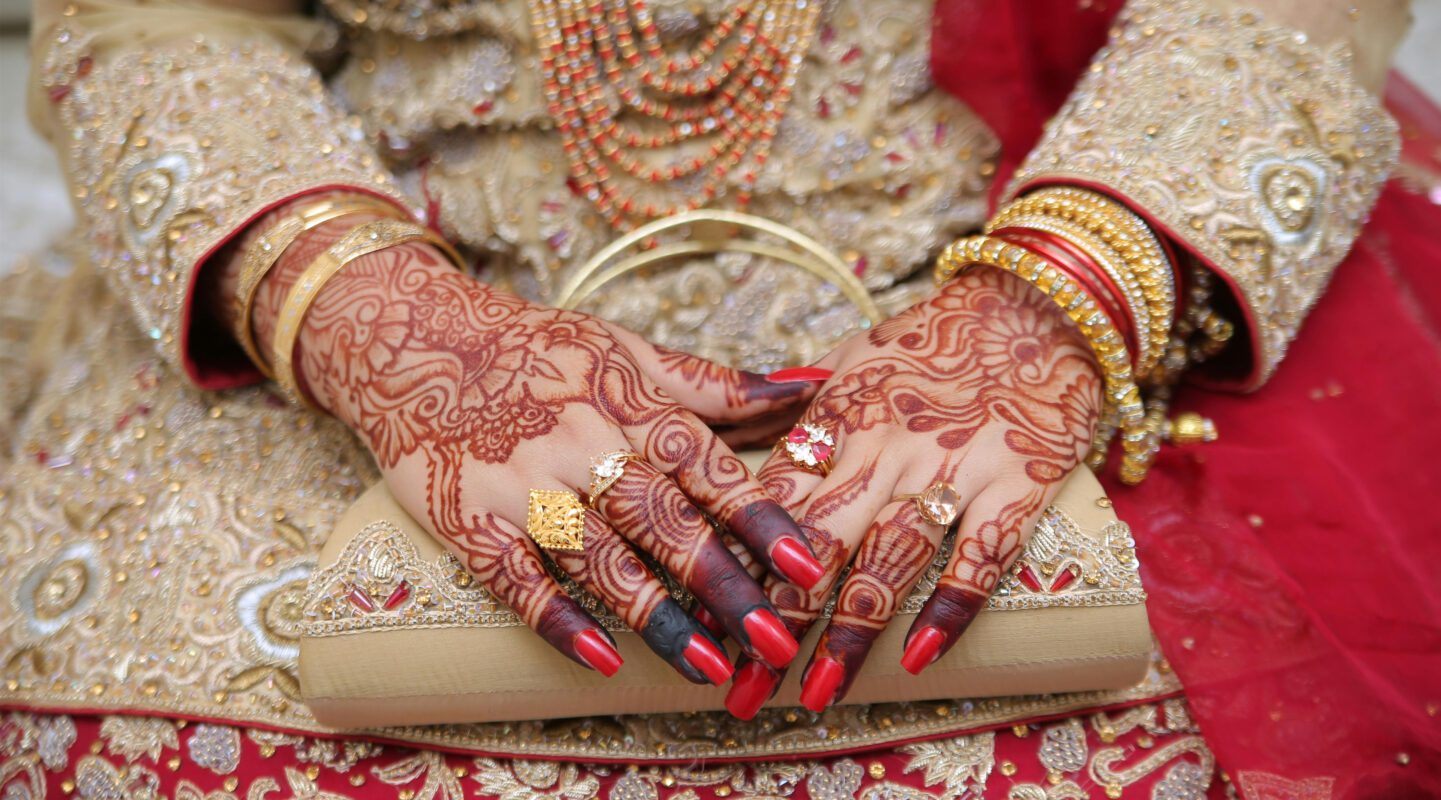
Natural henna powder exhibits a hue that blends moss and terracotta, with a texture reminiscent of mineral pigments used in ancient rock paintings. When combined with rose hydrosol or lemongrass essential oil, the dormant dye molecules within the plant cells awaken, transforming into a smooth paste. This crucial preparation step determines whether the design will blossom into the most brilliant chromatic poetry on the skin.
▸ Choose the traditional natural color: Initially appearing as a mysterious antique bronze-green, it gradually oxidizes over 24 hours into a burnt sienna reminiscent of molten sunset, as if imprinting earth’s memory onto the skin
▸ Experiment with black variations: Adding trace amounts of plant-based colorants (such as Indian indigo or dragon’s blood resin) transforms patterns into silhouette art against the night. While colorfastness improves moderately, certain formulations can indeed extend the design’s residence by 2-3 days
The final color manifestation dances like moonlight with tides, depending on:
Skin thickness: Precipitates as dark coffee on knuckles, transforms into salmon pink on the back of hands
Body temperature variations: Blossoms pomegranate red near blood vessels, solidifies into amber orange at extremities
Metabolic cycles: Oily skin retains caramel tones longer, dry areas fade to light ochre
From ancient mineral veins to modern beauty workshops, this breathing pigment always follows nature’s law—it doesn’t cover the skin’s surface but dances with the stratum corneum, gracefully exiting with cellular metabolism, completing a visual narrative that spans approximately two weeks.
The symbols of henna tattoos
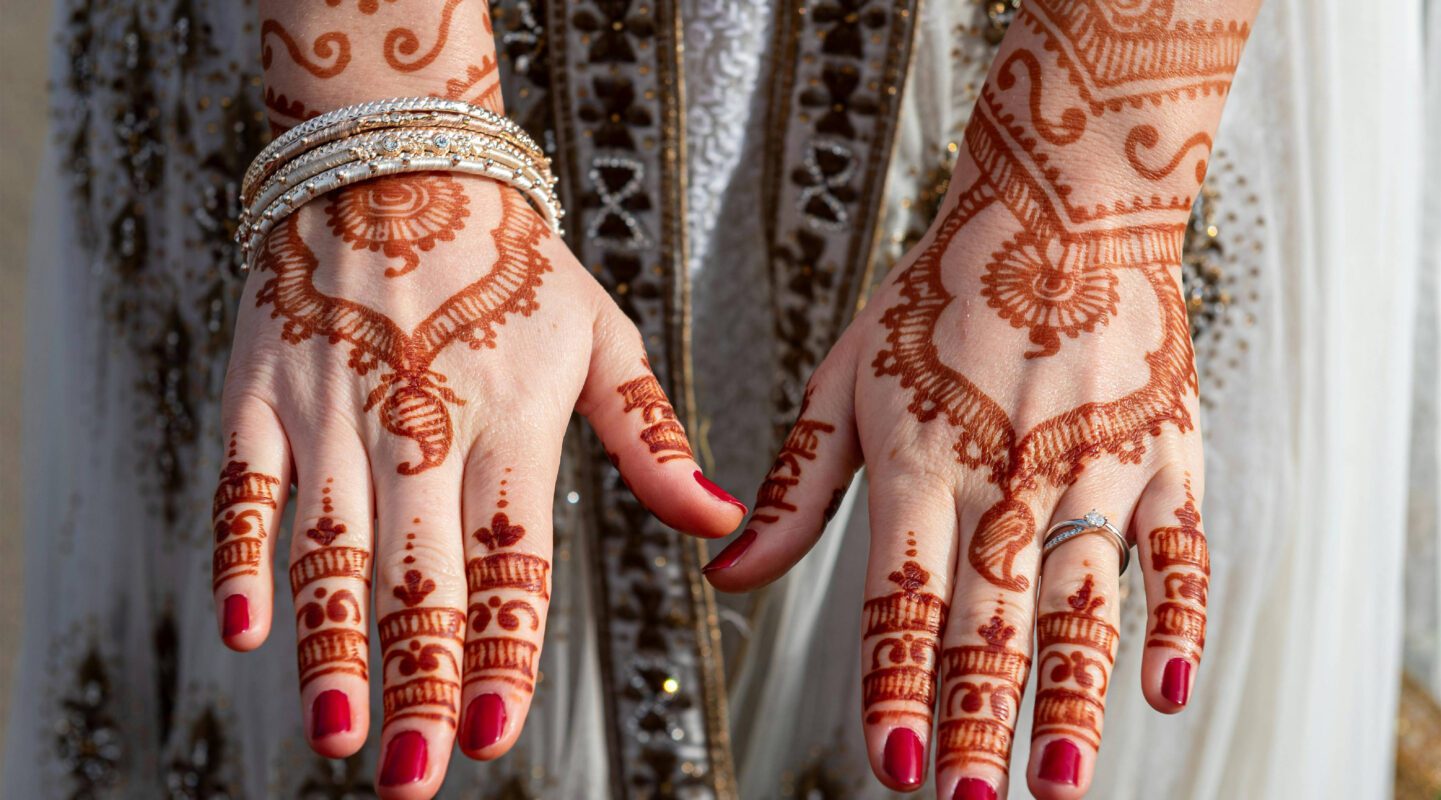
For numerous civilizations, henna has never been merely decorative art. Those蜿蜒 patterns are in fact spells carrying millennia of collective consciousness—the diamond grids on Berber women’s hands serve as energy shields against the evil eye, the spiral motifs on Sahara nomads’ ankles form secret maps guiding the water of life, and the lotus designs in the crook of Indian brides’ arms resonate with the universe’s eternal rhythm of regeneration. This sacred energy, known as “Baraka” in North African culture, flows like streams through ceramic glazes, leather embossing, and textile weavings, forming the spiritual thread connecting traditional craftsmanship.
When grandmothers draw checkerboard patterns on a bride’s palms, they are imparting marital wisdom: the black and white squares symbolize the symbiotic philosophy of alternating day and night, while the chessboard layout symbolizes the long life that requires mutual cultivation. If the bride’s back is adorned with tortoise shell patterns, it invokes wishes for prolific lineage like the turtle clan; peacock feathers resting on shoulders celebrate beauty while warning against vanity; butterflies dancing at the nape witness the metamorphosis from maiden to wife.
Contemporary henna artists continue this ancient visual language:
Zigzag lightning patterns summon rainfall and rebirth
Wavy curves record emotional tides fluctuating like heartbeats
Wrists densely patterned with pomegranate seeds conceal devout prayers for abundance
When urban youth choose serpent designs coiling around collarbones, they may not know these once represented pharaonic divinity; when scorpion tails adorn ankles, they unconsciously revive ancient protective covenants. These epidermal symbols navigating between fashion and tradition allow modern individuals to engage in a millennia-spanning dialogue with humanity’s collective unconscious through ephemeral patterns that fade like whispered secrets between skin and soul.
How to get a henna tattoo in Morocco?
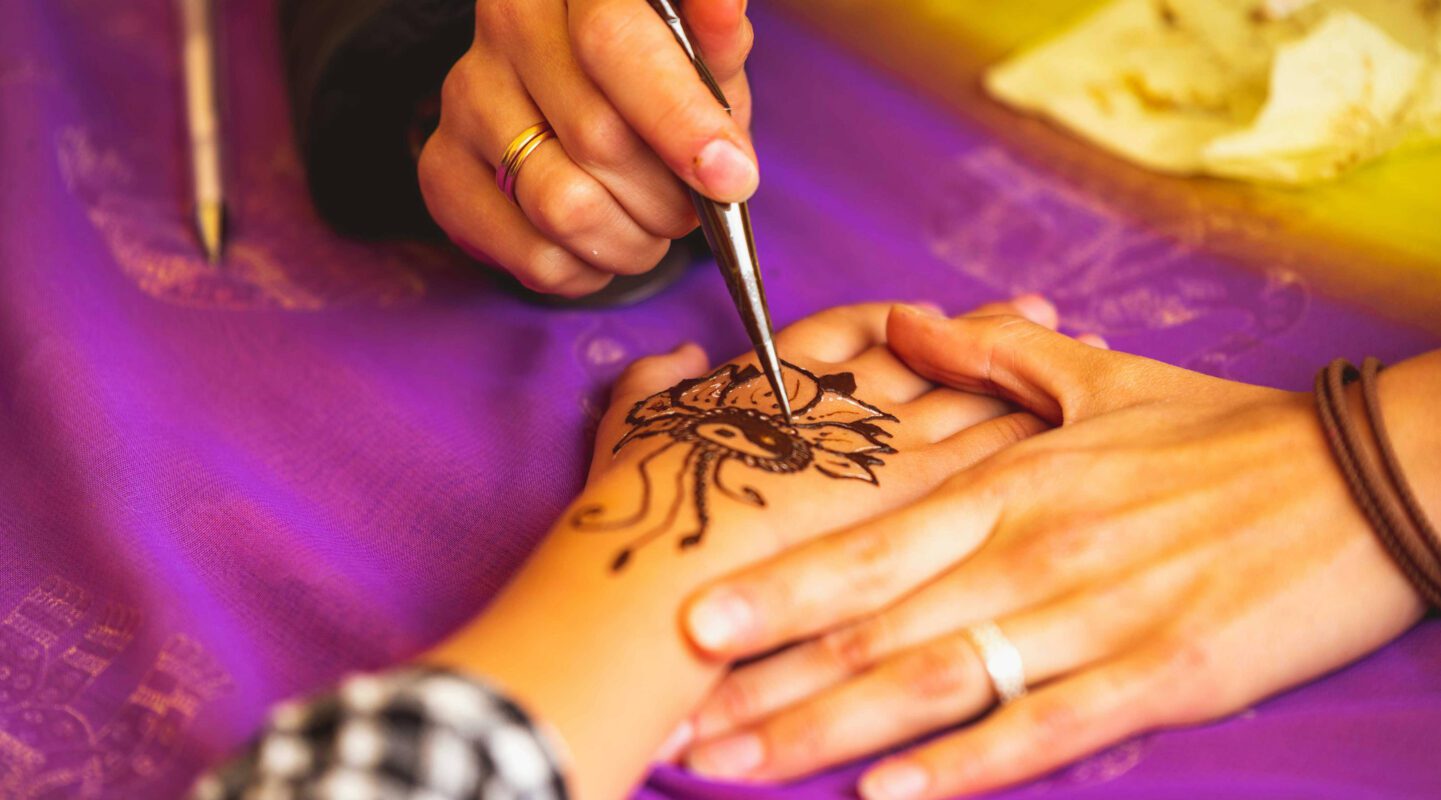
Finding a henna artist is effortless in Morocco. From Marrakech’s Djemaa el-Fna square to Chefchaouen’s blue alleyways, artisans holding cone applicators are as much a part of the landscape as the architecture itself. They’ll present pattern books filled with designs ranging from ancestral Berber geometric codes to modern interpretations of Arabesque vines—ensuring you find a motif that resonates with your journey.
The henna artist’s cone (similar to a syringe but needle-less) works like a magic wand. As earthy paste flows, lotuses bloom on wrists and Fes knots entwine around ankles. While the entire process typically takes just 10-25 minutes, remember these crucial details:
Negotiate firmly before the artist begins—initial quotes often have 60% bargaining margin
Try phrases like “This is a gift for my daughter” or “I’ll recommend you to my travel group”
Complete designs typically cost 50-200 MAD depending on complexity
Fresh henna requires careful aftercare:
Allow 30 minutes for surface drying, enjoying the unique cooling sensation
Avoid water contact for 6-8 hours; reinforce color with lemon-sugar water before sleep
The flaking crust next day reveals pottery-like textures—never peel manually
Final color develops over 24 hours, transitioning from orange-brown to sunset red
As you wander through Moroccan souks adorned with these temporary patterns, the Arabic vines trailing your fingers become more than travel souvenirs—they transform into intimate cultural imprints, letting the country’s artistry literally get under your skin.
Beware of Black Henna
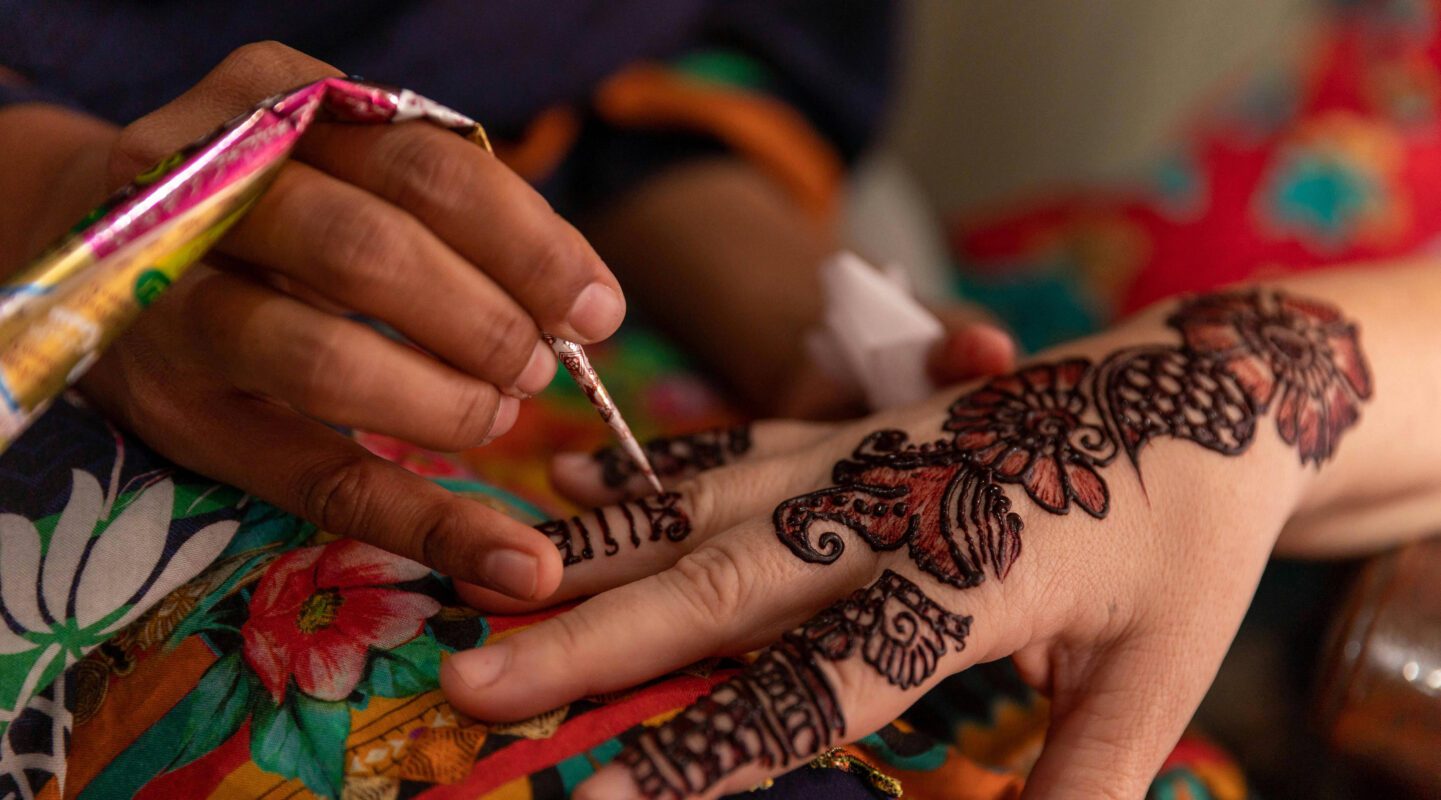
Be wary of so-called “black henna” temporary tattoos. Natural henna is never jet black—it only oxidizes from terracotta to deep reddish-brown over time. Some black dyes on the market are actually mixtures containing chemical colorants (particularly high concentrations of PPD, p-Phenylenediamine), which can cause severe reactions ranging from skin burns to lifelong allergies. If you detect a pungent odor or see unnaturally dark pigmentation, refuse immediately.
Henna art should be a safe physical and spiritual ritual: it allows those hesitant about permanent tattoos to “try on” designs on their skin, and offers a gentle alternative for those who fear needles. When choosing hand-painted designs in Marrakech’s squares, insist on traditional olive-brown paste. Let those natural pigments born from plant leaves inscribe an exotic tale on your body that is both beautiful and safe.
Contact us for more travel information!

